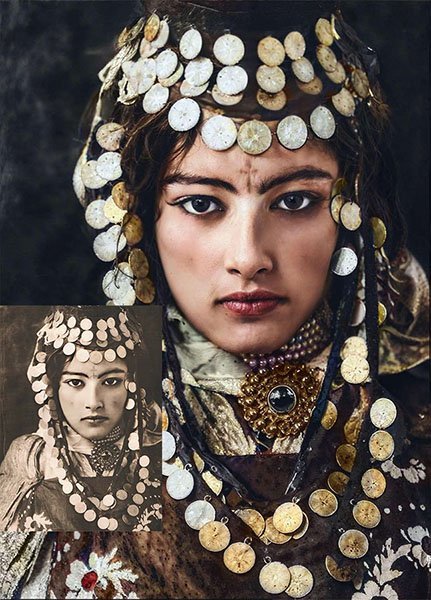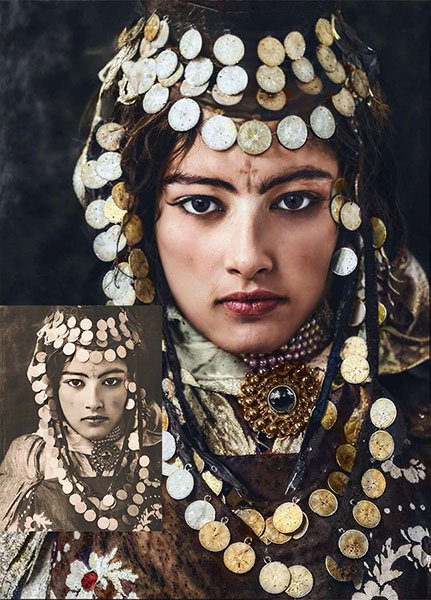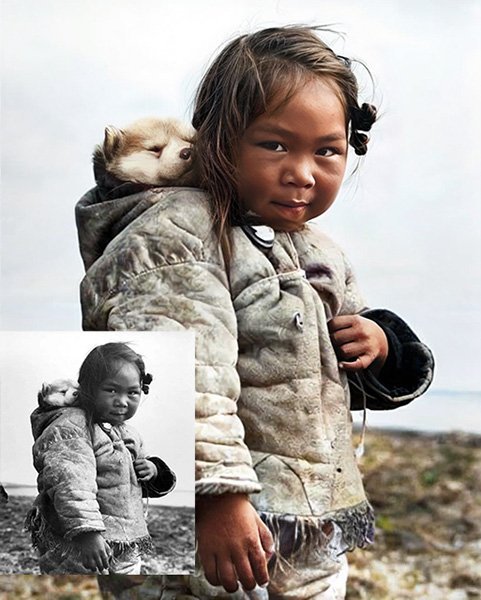
The Lost Art of Hand-Colourising: Why Color Adds New Life to Old Photos
Photo Restoration Melbourne
by Photo Restoration Rescue
The Lost Art of Hand-Colorizing: Why Color Adds New Life to Old Photos
In today’s digital world, most of us are accustomed to vibrant, high-resolution photos at our fingertips. Yet, some of the most captivating images are those brought back to life from black-and-white originals through hand-colorization. This timeless art form not only revives memories but also enhances our connection to the past, adding emotional depth and a new perspective to historical photos. In this blog, we’ll explore the intricacies of hand-colorizing, its historical significance, and the magic it brings to the final image.
The Colorizing Process: How It Works
Hand-colourising is both an art and a science, requiring a meticulous approach to transform monochromatic photos into vivid, lifelike representations. Here’s a breakdown of the traditional colourising process:
Preparation and Restoration: Before colourising, the original black-and-white photo must be cleaned up digitally. This step involves restoring faded areas, fixing scratches, and enhancing contrast to ensure a smooth base image.
Choosing Colours: Colourising requires extensive research, especially with historical photos. Artists study period clothing, architecture, and even natural elements like skies and landscapes to select authentic colours. The goal is to stay true to the era, so historical accuracy is prioritized in every detail.
Layering Colors: Unlike modern digital colorization, hand-colorizing relies on layering pigments. Artists traditionally used oil paints, watercolours, or pastels, applying colour in thin, translucent layers that build up to a rich, realistic appearance. Today, digital colourising software allows artists to apply similar layering techniques using brushes and customizable hues.
Fine-Tuning and Blending: Artists pay careful attention to light sources and shadowing to keep the colour consistent with the photograph’s original light dynamics. The most challenging areas are often skin tones, as slight colour variations can change the perception of the person’s age, health, or emotional expression.

The Historical Significance of Hand-Colourising
Colourising black-and-white photos has been around since the invention of photography itself. In the late 1800s, artists began adding pigments to photographs, as black-and-white photos could seem stark and uninviting. Wealthy families commissioned colourised portraits, and popular landscapes were colourised to mimic paintings, blending fine art with new photographic technology.
In the 20th century, hand-colourised postcards became a popular way to bring scenic destinations to life for distant viewers. By the 1940s, magazines and photo studios frequently used colourisation to enhance otherwise monochrome images, particularly in advertising and film posters. This period marked the height of hand-colourising, making it a mainstay in popular media.
The artistry of hand-colourising began to wane with the arrival of colour film and digital photography. However, today, artists and photo restoration specialists have reignited this skill, using digital tools to bring back the vibrancy of colour while preserving the historical essence of vintage photos.
The Impact of Colour on the Final Image
When colour is added to a black-and-white photograph, it transforms the image into a time portal that resonates with today’s viewers. Here’s how colour significantly impacts the way we perceive these photos:
Evoking Emotion: Colour has a unique way of conveying emotion. Hand-colourising adds warmth and familiarity, creating a more tangible connection to the people and events in the photo.
Depth and Detail: Black-and-white photos can flatten details, especially in busy backgrounds. Colour brings attention to elements that might go unnoticed, like the texture of clothing or the richness of a landscape.
Historical Context: Colourising doesn’t just make a photo more visually appealing—it helps viewers relate to history. A colourised image of a historical figure or event makes it easier to imagine the scene as it would have appeared in real life.
Personal Connection: Colourising personal photos, like family portraits, allows people to reconnect with lost loved ones in a way that black-and-white images sometimes can’t. Many clients request colourisation for family photos as a way to preserve their heritage in a format that feels more accessible and relatable to future generations.

Bringing the Art of Hand-Colourising into the Modern Era
With advances in technology, hand-colourising has become accessible to more people than ever. Digital tools allow artists to colourise images with remarkable precision, mimicking traditional techniques while taking advantage of software that streamlines the process. However, the principles of hand-colourising remain grounded in history and artistry, with the best practitioners prioritising historical research, colour accuracy, and careful application.
Colourised photos serve as a bridge between the past and present, reminding us of how far we’ve come and encouraging us to look back with renewed appreciation. They’re not just reimagined images—they’re vibrant stories brought back to life, preserved for future generations to explore and appreciate.
Hand-colourising may be a “lost art,” but it’s an art form with lasting impact, offering a unique and beautiful way to honour history while celebrating the timeless appeal of colour. Whether restoring a family heirloom or bringing a historical image to life, colourised photos remind us that the past isn’t so distant after all—it’s just waiting for a touch of colour to remind us of its place in our lives today.
FAQ: Hand-Colourising Old Photos
Q1: How long does hand-colourising a photo take?
The time it takes to colourise a photo depends on the complexity and level of detail in the image. Simple portraits might take a few hours, while intricate scenes could require several days.
Q2: Can you colourise any type of photo?
Yes, most photos can be colourised as long as they are of good quality. Even damaged or faded images can often be restored digitally before colourising.
Q3: Is digital colourisation as authentic as traditional hand-colourising?
Digital colourisation can closely mimic the look of traditional techniques while allowing for finer adjustments and historical accuracy. With research, both methods can achieve an authentic look.
Q4: Will colourising damage the original photo?
Not at all! Colourisation is done digitally, so your original photo remains untouched. We scan and work on a digital copy, preserving the integrity of the original image.
Why Choose Us for Hand-Colourising Your Photos?
At Photo Restoration Melbourne, we combine a passion for history with the latest technology to bring your memories back to life. Our specialists take the time to research and use authentic colours that respect each photo’s era. Here’s what sets us apart:
- Expertise in Colour Accuracy: We meticulously study the historical context to ensure colours are true to the period, from skin tones to clothing.
- Attention to Detail: Every photo receives careful, individual attention, from enhancing details to creating natural-looking light and shadow.
- Customised Service: Whether it’s a treasured family photo or a significant historical image, we work closely with you to achieve the perfect look.
- Preserving Memories: We’re committed to helping you pass down beautifully restored, colourised photos to future generations.
Give your memories new life and connect with the past in full colour! Let us help you bring the vibrancy of history into the present.
Experience Photo Restoration Excellence Pay Only If You're Satisfied
Allow our experts to restore your damaged photos with precision and care - satisfaction guaranteed!
You only pay if you are completely satisfied with the results.

